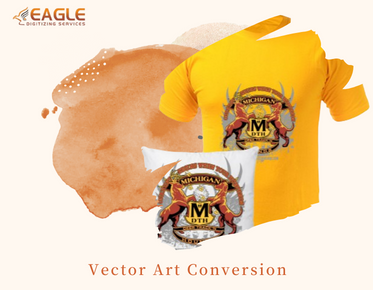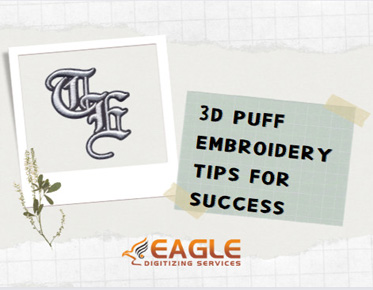Discover the Leading Vector Art Conversion Services in the USA
Vector art conversion is the unsung hero of the design world. Whether you're a graphic designer, a business owner, or just someone who wants their art to look impeccable, understanding vector art and its conversion is essential. Let's explore the world of vector art conversion and why it matters so much.
Understanding
Vector Art: The Basics
At its core, vector art is about precision. Unlike raster images that blur and lose clarity when resized, vector art remains crisp and clear. This is because vector images are made up of points, lines, and curves, rather than pixels. Each element in a vector image is defined by mathematical equations, ensuring that the image can scale infinitely without losing any detail.
Why
Convert to Vector Art?
The primary reason for converting to vector art is to preserve the integrity of your images at any size. Whether you’re printing a small business card or a large billboard, vector images ensure that your artwork remains flawless. This conversion is particularly important for logos, marketing materials, and any artwork that needs to be versatile and high-quality.
The
Benefits of Vector Art Conversion
Crisp and Clear: The Quality
Advantage
Vector art offers a significant quality advantage over raster images.
Because vector images are based on mathematical equations, they do not lose
quality when scaled. This means your designs will always look sharp and
professional, no matter how large or small they are.
Scalability: Perfect Art at Any
Size
One of the biggest advantages of vector art is its scalability. You
can resize vector images to any dimension without any loss of quality. This
makes vector art ideal for a wide range of applications, from tiny icons to
enormous banners.
Versatility: Use Your Art
Anywhere
Vector art is incredibly versatile. It can be used in a variety of formats and across different media. Whether you need to print on fabric, create digital graphics, or design intricate illustrations, vector art can handle it all seamlessly.
Popular
Uses for Vector Art in Design
Logo Design: Creating Memorable
Brand Identities
Vector art is the go-to choice for logo design, enabling designers to
craft memorable and scalable brand identities that leave a lasting impression.
Illustrations and Icons: Adding
Visual Appeal to Websites and Apps
Vector illustrations and icons enhance the visual appeal of websites
and mobile apps, providing users with intuitive and aesthetically pleasing
interfaces.
Print Design: High-Quality
Prints for Marketing Materials
In print design, vector art ensures high-quality prints for marketing
materials such as brochures, posters, and business cards, maintaining clarity
and detail at any size.
Apparel Design: Customized
Clothing and Merchandise
Apparel designers leverage vector art to create customized clothing
and merchandise, translating intricate designs onto fabric with precision and
clarity.
Infographics: Visualizing Data
and Information
Vector graphics are instrumental in creating engaging
infographics that effectively communicate complex data and information in a
visually compelling manner.
Packaging Design: Eye-Catching
Packaging for Products
In packaging design, vector art plays a crucial role in crafting
eye-catching labels and packaging that attract consumers and communicate brand
identity.
Signage and Banners: Effective
Outdoor Advertising
Vector graphics are indispensable in outdoor advertising, enabling the
creation of impactful signage and banners that capture attention and convey
messages clearly.
Motion Graphics: Dynamic
Animations for Videos and Presentations
In motion graphics, vector art is used to create dynamic animations
for videos and presentations, adding visual interest and enhancing
storytelling.
Product Design: Prototyping and
3D Modeling
Product designers utilize vector art for prototyping and 3D modeling,
facilitating the visualization and development of innovative products.
Interior Design: Visualizing
Spaces and Layouts
Interior designers use vector art to visualize spaces and layouts,
creating detailed floor plans and renderings that guide the design process.
Tattoo Design: Unique and
Detailed Tattoo Art
Tattoo artists employ vector art to design unique and detailed tattoo
art, ensuring precise outlines and intricate patterns that stand the test of
time.
Embroidery: Custom Embroidered
Designs
In embroidery, vector art serves as the blueprint for custom designs,
guiding the stitching process to create intricate and finely detailed patterns.
Digital Art: Exploring Creative
Possibilities
Digital artists explore the creative possibilities of vector art,
pushing the boundaries of imagination and expression in digital artistry.
Architectural Illustration:
Visualizing Architectural Concepts
Architects use vector art for architectural illustration, visualizing
concepts and designs with precision and clarity.
Gaming: Character and
Environment Design
Game developers rely on vector art for character and environment
design, creating immersive gaming experiences with vibrant and detailed
visuals.
Art Prints and Posters:
Decorative Wall Art
Artists and designers produce decorative wall art using vector graphics, offering a wide range of prints and posters that add style and personality to any space.
Top
Vector Art Conversion Services in the USA
What to Look for in a Vector Art
Conversion Service
When choosing a vector art conversion service, consider factors such
as quality, turnaround time, and customer reviews. Look for services that offer
high-quality conversions, quick delivery times, and positive feedback from
previous clients.
Must-Have Features and Benefits
Key features to look for include multiple file formats,
high-resolution output, and customer support. Benefits such as satisfaction
guarantees and the ability to handle complex designs are also important.
Turnaround Time: How Fast Do You
Need It?
Turnaround time is crucial, especially if you’re working on a tight
deadline. Some services offer same-day or next-day delivery, which can be a
lifesaver for urgent projects.
In-House vs. Outsourcing: Which
is Better?
Deciding whether to handle vector art conversion in-house or outsource it depends on your resources and needs. In-house conversion offers more control, but outsourcing can be more cost-effective and efficient.
Comparing
the Leading Vector Art Conversion Companies
Quick Overview of Top Providers
Top providers in the USA include Vector Magic, Adobe Illustrator, and Vectorizer.io.
Each of these services has its strengths, making them suitable for different
needs.
Strengths and Weaknesses of Each
Service
Vector Magic is known for its ease of use and quick turnaround times. Adobe Illustrator offers unparalleled precision and customization but has a steeper learning curve. Vectorizer.io is great for simple conversions but may struggle with more complex designs.
DIY
vs. Professional Vector Art Conversion
When to DIY: Basic Tools and
Techniques
DIY vector art conversion can be a good option if you have the right
tools and skills. Software like Adobe Illustrator and Inkscape can help you
convert images, but they require a certain level of expertise.
When to Go Pro: Hiring the
Experts
For complex designs or if you lack the time and skills, hiring a professional is often the best choice. Professionals can ensure high-quality conversions and handle any challenges that arise.
Costs:
What to Expect
Breaking Down the Price Range
Vector art conversion costs can vary widely. DIY options might only
cost you the price of software, while professional services can range from $20
to several hundred dollars, depending on the complexity and turnaround time.
Hidden Fees and Extra Costs
Be aware of hidden fees, such as charges for revisions or additional file formats. Always clarify the total cost upfront to avoid surprises.
Customer
Reviews: What Are People Saying?
How to Find Honest Reviews
Finding honest reviews can be tricky, but look for detailed feedback
on independent review sites. Pay attention to both positive and negative
comments to get a balanced view.
Red Flags to Watch Out For
Watch out for red flags such as consistently late deliveries, poor communication, and low-quality output. These are signs that a service may not be reliable.
Specialized
Vector Art Conversion Services
High-Detail Artwork: Capturing
Every Line
Some services specialize in high-detail artwork, ensuring that every
line and detail is captured accurately. This is essential for intricate designs
and illustrations.
Low-Resolution to
High-Resolution: Bringing Art to Life
Converting low-resolution images to high-resolution vector art can
breathe new life into your artwork. This process enhances clarity and detail,
making your designs stand out.
Conversion for Specific
Industries: Tailored Solutions
Certain industries, like fashion or automotive design, have specific requirements for vector art. Specialized services can provide tailored solutions to meet these unique needs.
The
Process: From Raster to Vector
Step-by-Step Breakdown
The conversion process typically involves importing the raster image,
tracing it to create vector paths, adjusting the paths for accuracy, and then
exporting the final vector image. Each step requires precision and attention to
detail.
Common Challenges and How to
Overcome Them
Common challenges include handling complex details, ensuring smooth
curves, and maintaining color accuracy. Overcoming these challenges requires
expertise and the right tools.
Tips and Tricks for a Smooth
Conversion
To ensure a smooth conversion, start with a high-quality raster image, use the right software, and take your time adjusting the vector paths. Patience and practice are key.
Future
Trends in Vector Art Conversion
Emerging Technologies and
Innovations
Emerging technologies like AI and machine learning are revolutionizing
vector art conversion. These innovations are making the process faster and more
accurate.
How AI is Revolutionizing Vector
Art
AI-powered tools can automate much of the conversion process, reducing the need for manual adjustments. This technology is making vector art conversion more accessible to everyone.
Vector art conversion is essential for maintaining the quality and versatility of your designs. Whether you choose to DIY or hire a professional, understanding the process and choosing the right service is crucial.
Choosing the right vector art conversion service involves considering your needs, budget, and timeline. By doing
your research and understanding your options, you can ensure that your artwork
looks impeccable in any format.



